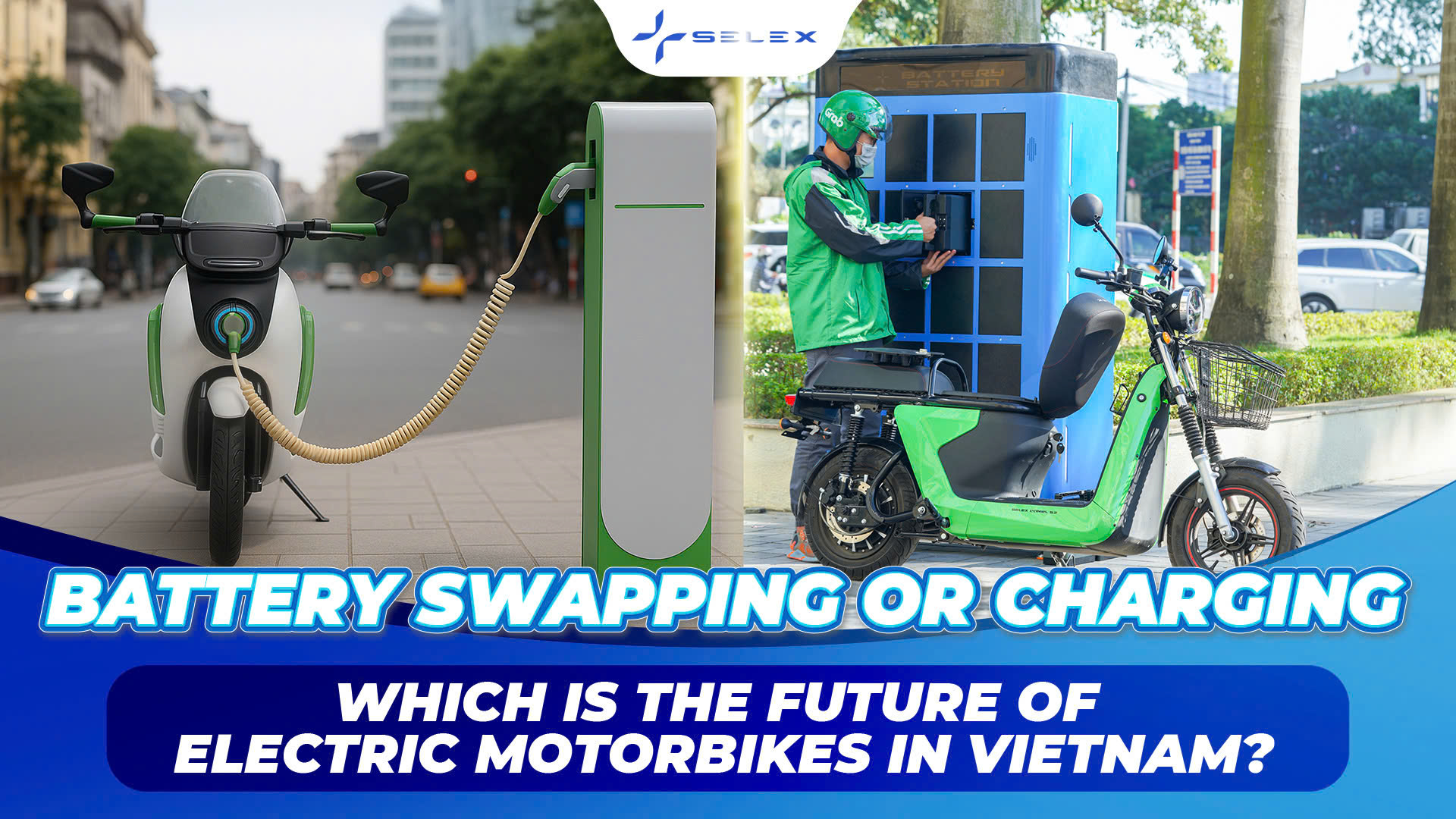Battery charging is the most familiar method of powering electric vehicles. However, it comes with challenges: charging requires ample space for parking and waiting, especially in densely populated areas. Fast-charging stations need high-voltage power systems, and unsafe home-charging using uncertified equipment has led to dangerous fire and explosion incidents.
So, how does battery swapping, a method already common in many countries, offer solutions to these limitations? And can the battery swapping model, pioneered in Vietnam by Selex Motors, meet the needs of millions of users and match the convenience of gas stations?
1. Save Time – Swap in Just 2 Minutes
With traditional battery charging, users typically need 4–6 hours (or 2–3 hours with fast charging) to fully recharge. This interrupts usage and is especially inconvenient for delivery drivers or service riders.
Selex’s battery swapping stations solve this: riders can simply swap out a depleted battery for a fully charged one in just 2 minutes, then hit the road again—just like refueling a petrol bike. No downtime, no disruption.
Unlike home charging—which poses risks of overheating, overcurrent, and battery degradation (even fires overnight or when unattended)—each Selex battery is monitored 24/7 in real time via the company’s advanced station and battery management system. Any safety risk is identified and handled immediately, with alerts and interventions from the central operations center. This minimizes fire hazards-an issue that currently concerns many users of electric vehicles in Vietnam.

2. Built for Vietnam’s Urban Landscape
In major cities, finding an available power outlet to charge your vehicle isn’t easy—especially for those living in apartments, rental housing, or small alleys. Installing public charging points also comes with barriers: electricity load, space, and infrastructure.
Battery swapping removes these obstacles. There’s no need to charge at home—just stop by the nearest Selex station, typically located in high-traffic areas like post offices, markets, or convenience stores, and continue your journey.
Selex swapping stations are compact, automated, and managed by technology. They require only 2 square meters of space and run on standard 220V household power. This smart, space-saving design makes it easy to scale and install widely—even in central urban areas.
3. Optimize Costs – Only Pay for What You Use
The battery is the most expensive part of an electric motorbike—accounting for up to 40% of its total cost. Buying a bike with a fixed battery means the user bears the full cost, plus maintenance and replacement when the battery degrades over time.
The swapping model solves this: you don’t buy the battery—you just pay for the energy you consume. Use more, pay more. Use less, pay less. No worries about battery damage or long-term degradation. Users can rent monthly or by flexible plans, making it ideal for students, young people, delivery riders, or anyone who wants to go electric without the upfront cost burden.
Moreover, when the battery remains under manufacturer ownership, it’s easier for regulators to oversee recycling and disposal according to safety and environmental standards. This avoids a future where millions of individual users own old, unusable batteries with no tracking or recycling path—posing a major environmental risk.
If every person owns a battery and every EV brand builds its own incompatible charging infrastructure, the market will fragment and EV adoption will stall. But if millions of users share a unified battery swapping network, where batteries are constantly reused, optimized, and managed by a central system, it creates a real breakthrough for green mobility in Vietnam-offering the same convenience as gas stations, but cleaner and smarter.
Selex Motors is currently the only company in Vietnam operating this battery swapping model, with over 100 stations in Hanoi, Ho Chi Minh City, Da Nang, and rapidly expanding nationwide.



